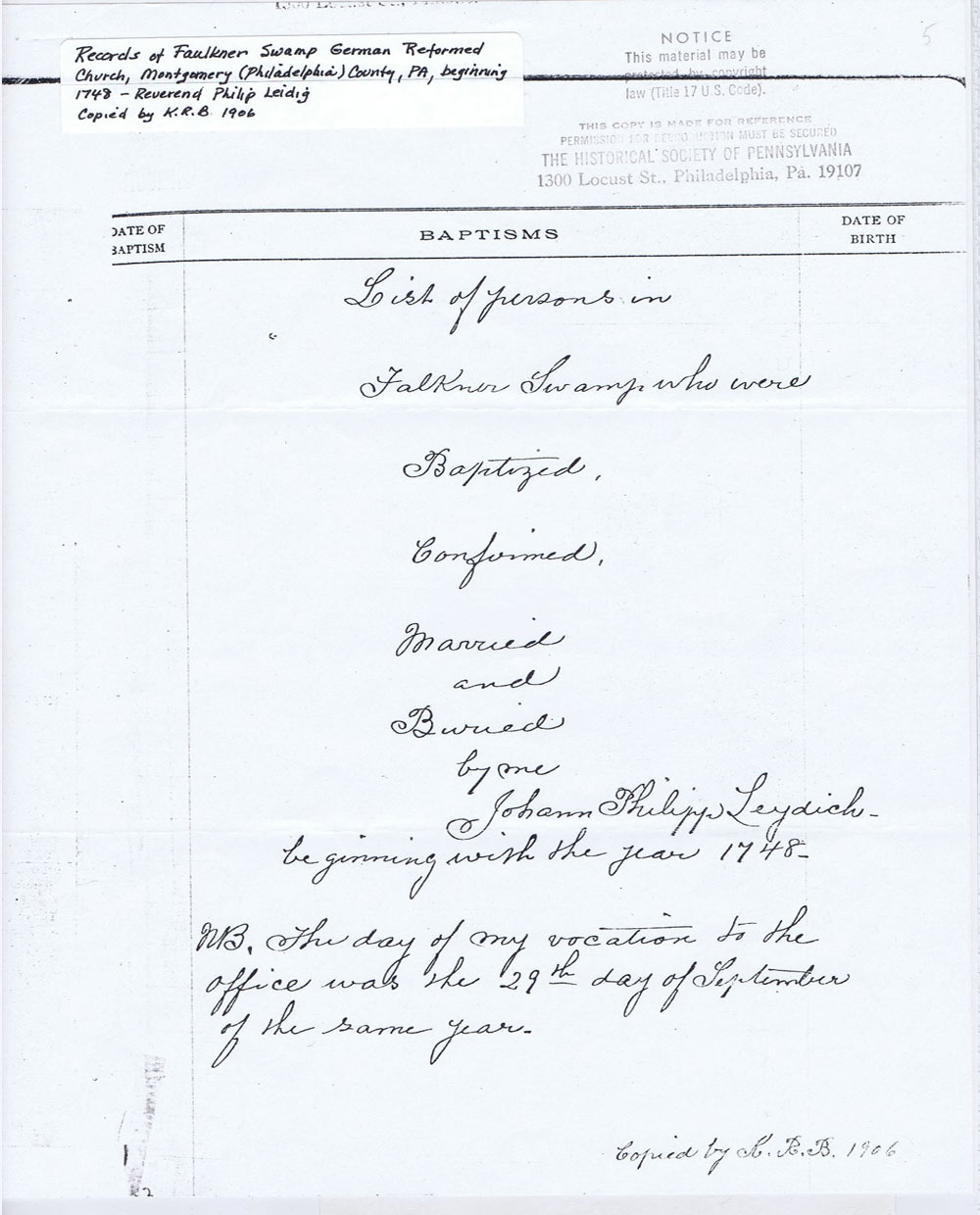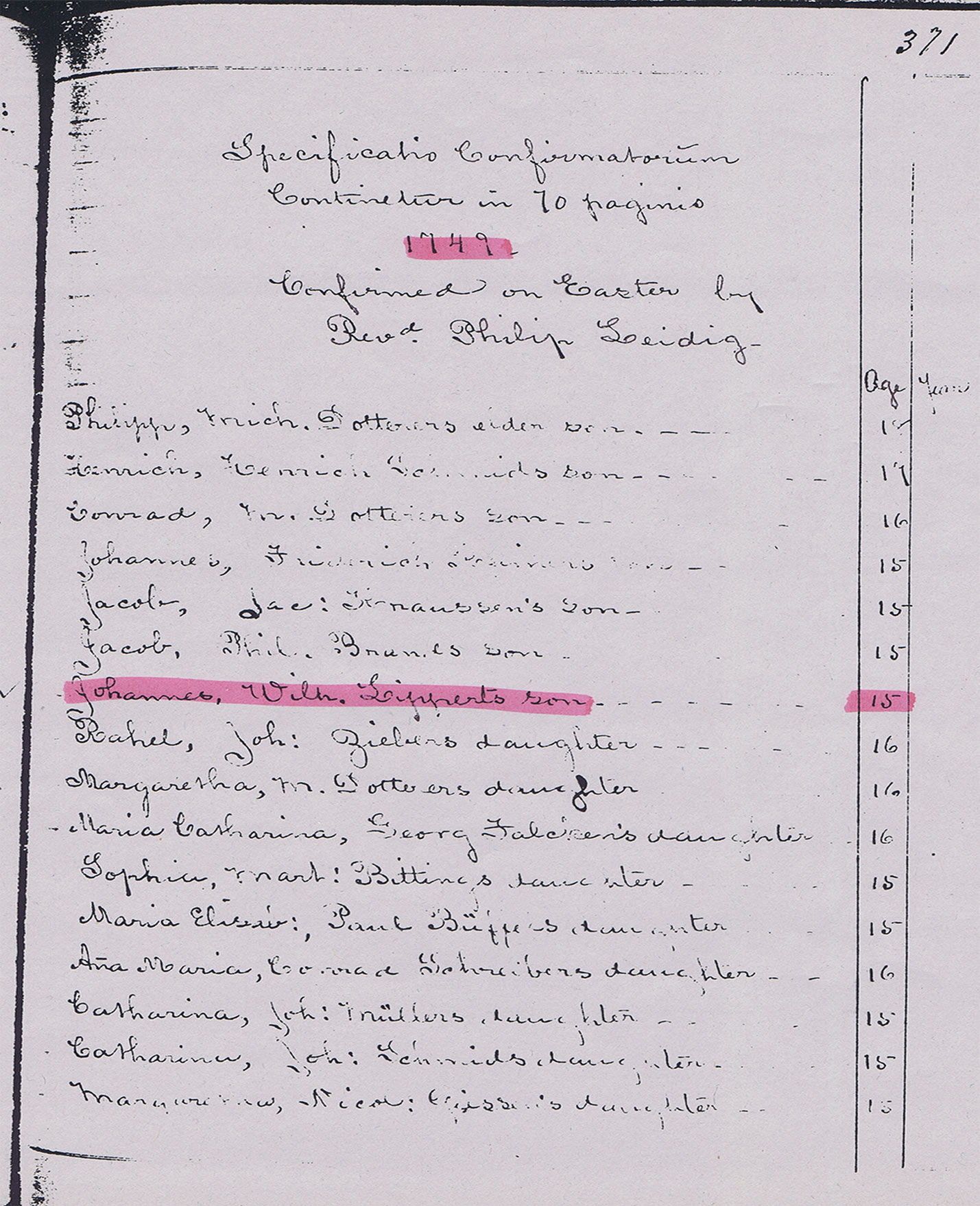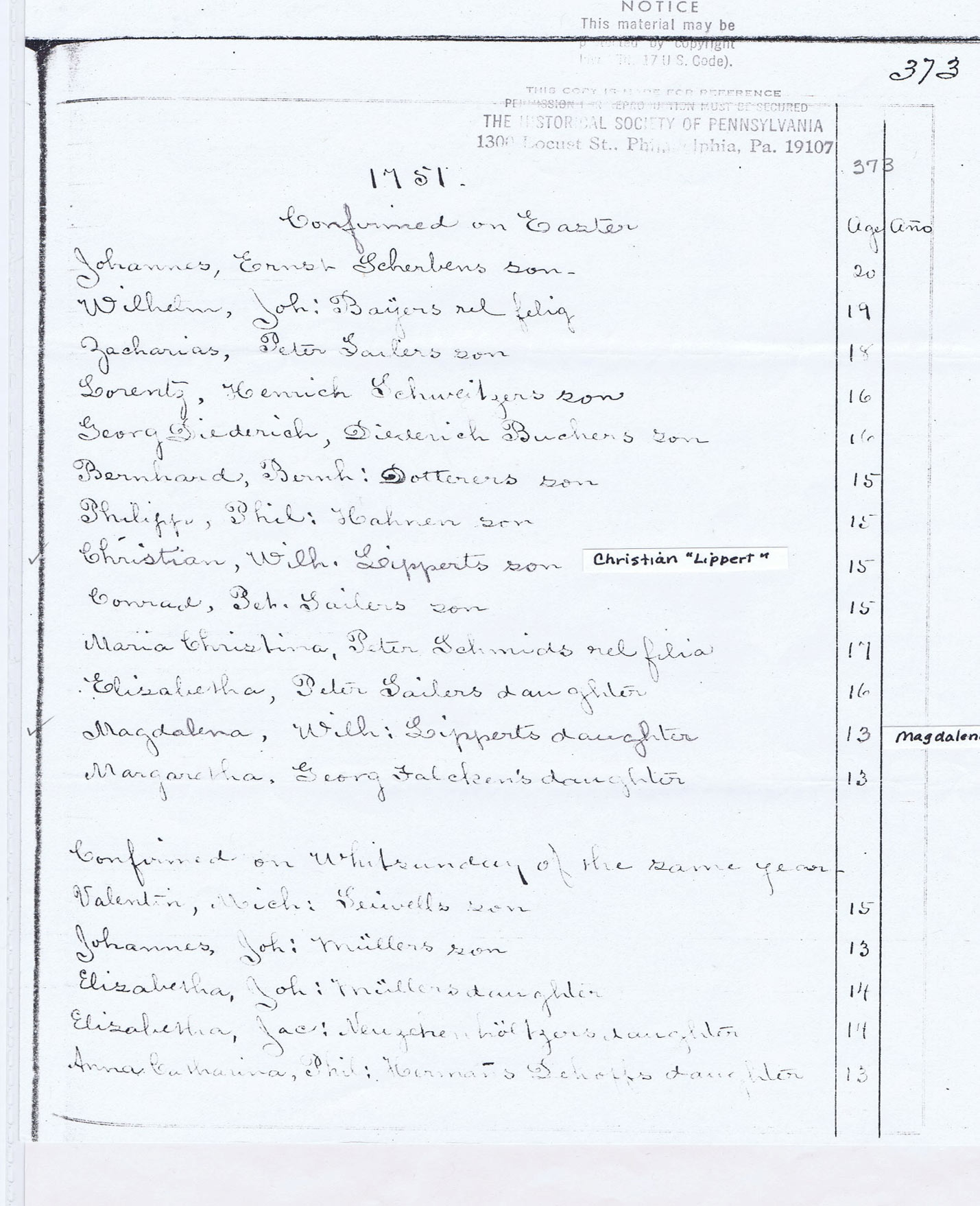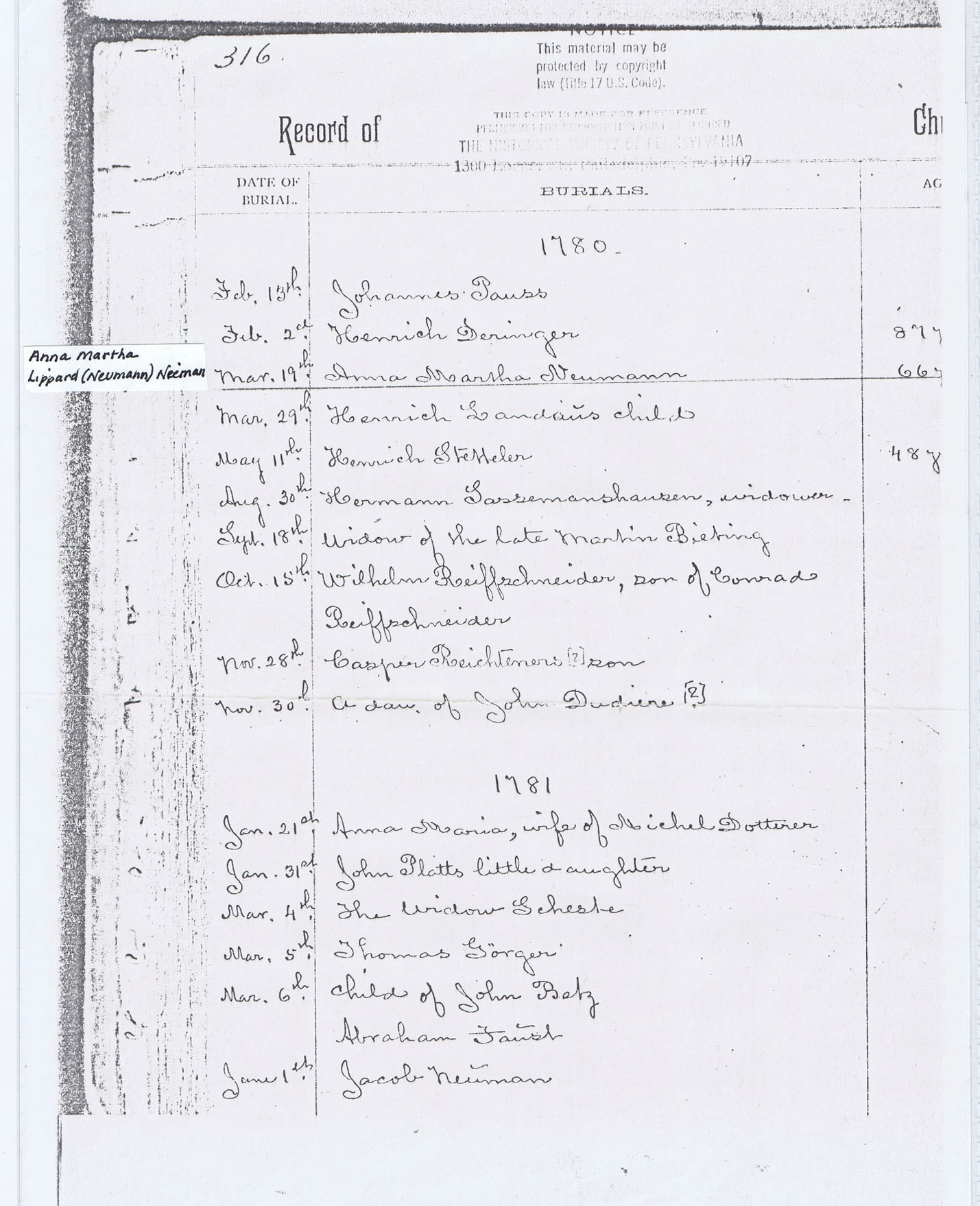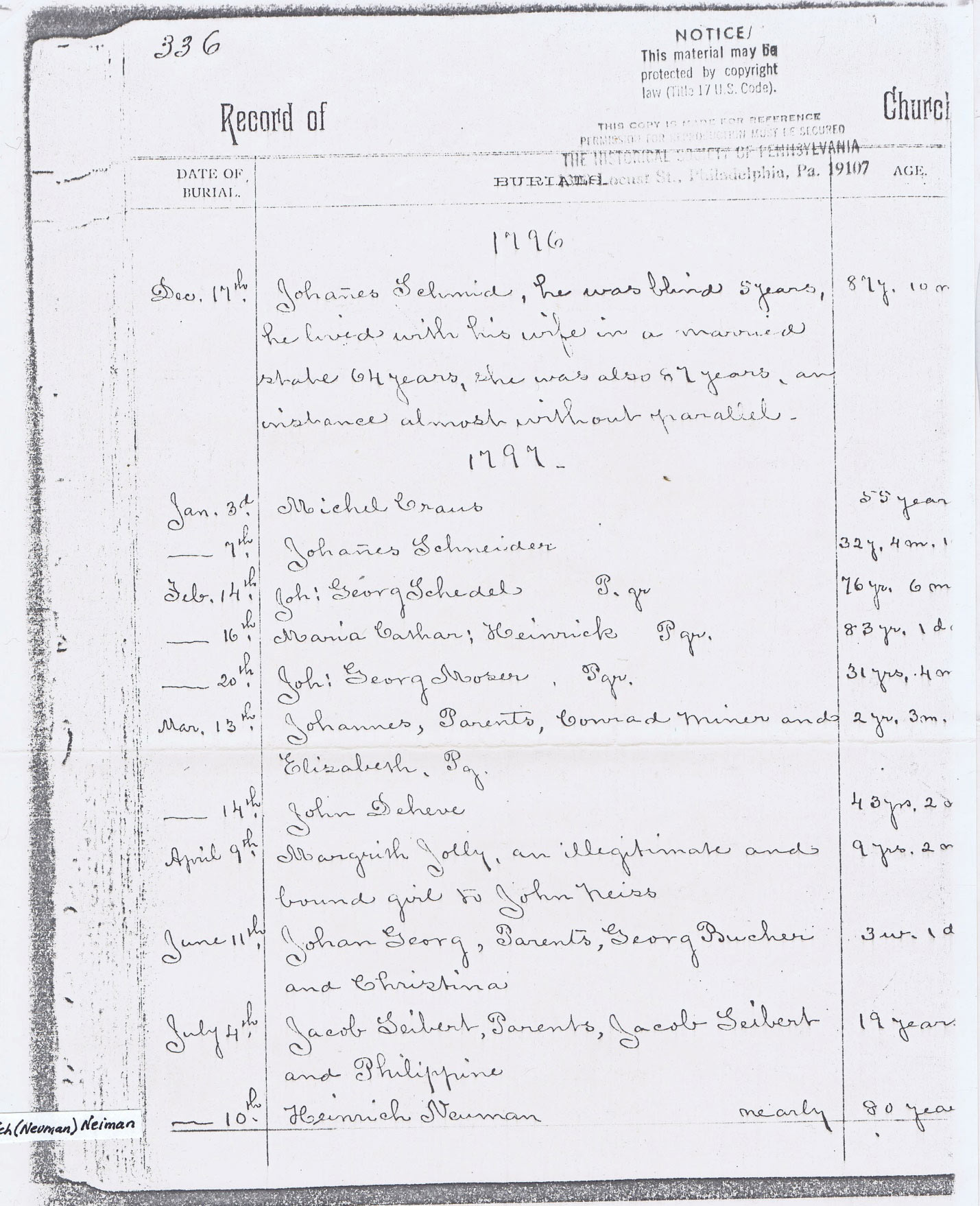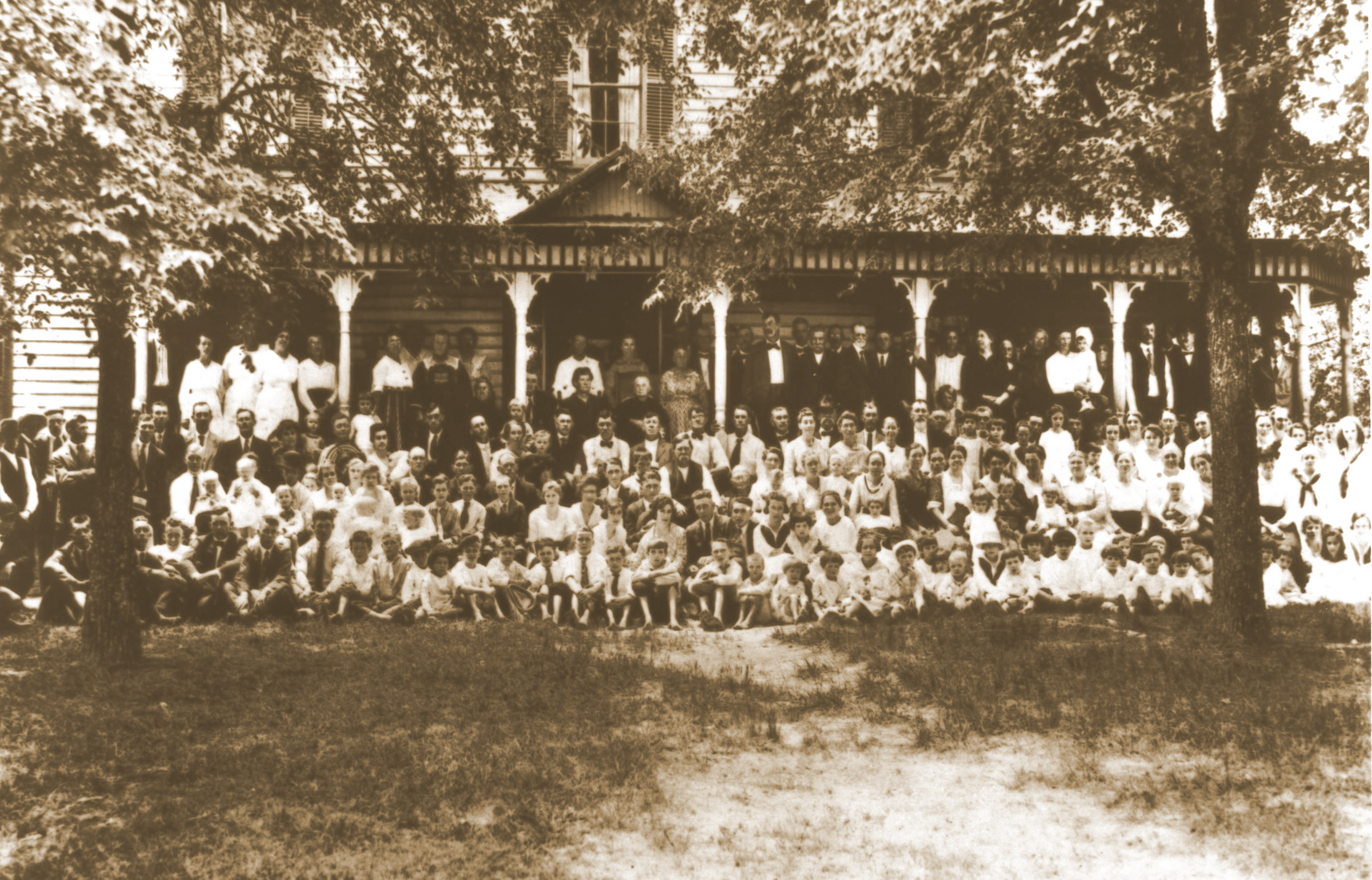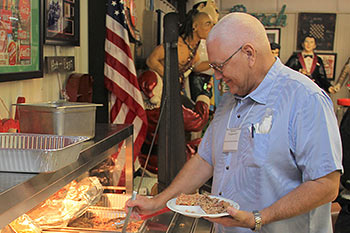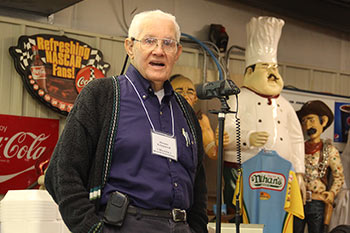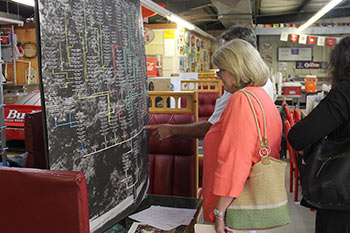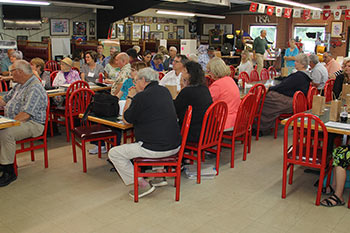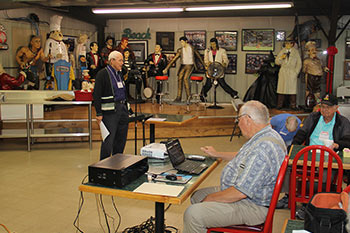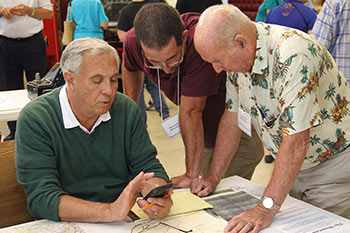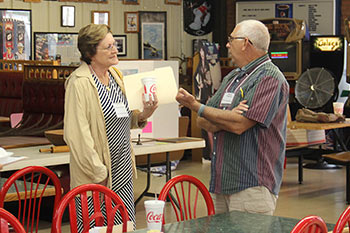CHAPTER 12
RELIGION AND FAULKNER SWAMP GERMAN REFORMED CHURCH
In searching for our immigrant family in both Europe and the colonies, we must consider church records to be generally one of the best sources in which to locate them. Thus it may be of importance to determine which religious faith the Lippards followed both in Germany and in the colonies in order to be able to search for them productively. However, the faith immigrants followed in the colonies was not necessarily the one they had practiced in the old world. In Germany the Gensungen church was referred to as Evangelische, meaning Protestant rather than Catholic. Because of the great difficulties of travel in America, many early pioneers became members of whichever church was closest to where they lived. Being of the Germanic background that the Lippards were as established by the ship's log, our family would probably have followed one of four religious traditions – Catholic, Anabaptist, Lutheran, or German Reformed. I can find no evidence at all to prove they were Catholic. They obviously were not Anabaptist because, unlike Anabaptists, they believed in infant baptism as is evidenced by Wilhelm and his wife Catharina's infant daughter Catharina's baptism in 1750 and the baptisms of several of Anna Martha's children in the Faulkner Swamp German Reformed church records in the Perkiomen Valley where they lived. We may wonder whether or not the Lippards were Lutheran or German Reformed since they appear, as we shall see, in Pennsylvania and initially in North Carolina in German Reformed records even though there was Hanover Lutheran Church practically next door to Faulkner Swamp Church. Nevertheless, there are no extant records of Conrad or his wife in either congregations, but later in North Carolina records many of the Lippards were members of Lutheran churches. I believe that once in North Carolina, many Lippards became Lutherans as a result of perhaps history in Germany, location in Pennsylvania and North Carolina, and marriage. Thus does the fact that the Lippards were members of a German Reformed Church in Pennsylvania prove that the Lippards were members of the German Reformed faith even in Germany? For some reason they were German Reformed in Pennsylvania, even though in those colonial times New Hanover Lutheran Church stood then as now as a close neighbor to Faulkner Swamp German Reformed Church where we first locate our Lippards in Pennsylvania. At that time the word "Swamp" did not usually mean "a wet, boggy place" but rather something more like "Meadow." Thus, new settlers in that area of Pennsylvania had a choice of Lutheran or German Reformed places of worship, and our Lippards chose German Reformed for whatever reason. However, the Reverend Storch, a Lutheran minister in North Carolina, recorded in his Diary the death of Wilhelm's wife, Catharina Neidhardt Lippard in 1795. One more question to pursue is whether or not the term German Reformed is equivalent to the German term Evangelische which is the name designating the church our Liphards belonged to (and Conrad was baptized in) in Gensungen, Germany.
FAULKNER SWAMP GERMAN REFORMED CHURCH AND RECORDS
Following his discovery of Conrad's will and estate inventory, Seth continued his search in Pennsylvania. With the knowledge that much of Philadelphia County later became Montgomery County, and with the list I sent him of colonial Reformed and Lutheran churches in both Philadelphia and Montgomery Counties in hand, Seth looked for early records of these churches in the county historical societies. Imagine his surprise as he searched through the records of one of the first he found -- the records (beginning in 1749) of the Reverend Johann Philipp Leydich of the Faulkner Swamp German Reformed Church near Gilbertsville, Montgomery County, Pennsylvania in the Perkiomen Valley. There he came upon not the name of Conrad, but the names of Wilhelm and Anna Martha and their families. Based on Seth's discovery of these church records, we found the first Lippard entry being the confirmation of Wilhelm and Catherina's son John, at Easter, 1749, at Faulkner Swamp Church, northwest of Philadelphia in then Philadelphia and now Montgomery County. We found no Conrad Lippard or Christian Neidhardt or Nighthart records nor any of our family's tombstones.
At that time Faulkner Swamp was a wooden frame church where a growing congregation of 89 communicant immigrant German and Swiss members and at least 250 souls total, including the children, met to worship. Although the church building our Lippards attended is no longer extant, the central part of the brick church that still stands today was constructed in 1790. Seth took my family (Norbert, Duane, and myself), my parents (Virginia and Paul Rumple), Homer Lippard, Sr., and his sons Daniel (Chip), and Homer, Jr., (Bud) and his family to visit Faulkner Swamp Church in 1981, and we visited it again as a group at our Lippard reunion in the Philadelphia area in 1988. From the Faulkner Swamp baptismal and confirmation records we learn more about both Wilhelm's and Anna Martha's families.
Soon after the New Hanover area was settled, the churches played not only an important religious role in the lives of the pioneers, but they also supported the establishment of schools for boys in the various communities. At this point the only education available for girls was whatever general life lessons and skills they learned at home or from other relatives and friends.
Both the Wilhelm and Catherine Lippard and Anna Martha and Johan Heinrich Neiman (Neuman) families were active members of Faulkner Swamp German Reformed Church as is evidenced in the Reverend Phyllip Leydich's records.

